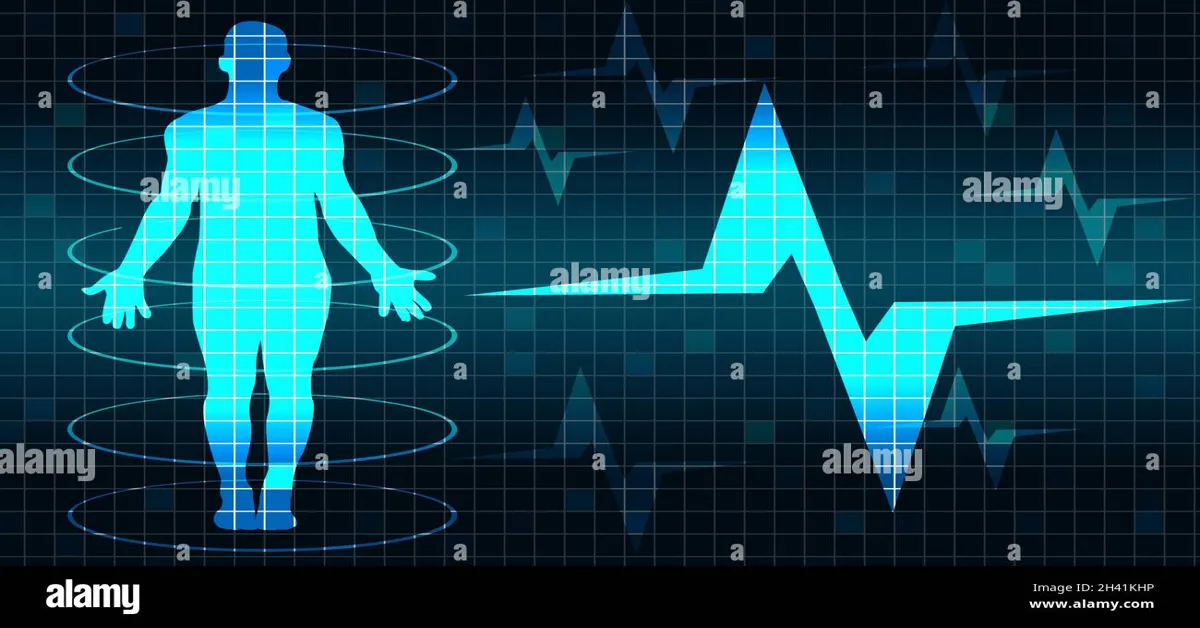Do you know the difference between your heartbeat and your pulse? Many people use these terms interchangeably, but they actually refer to two different things. Understanding the distinction between the two can provide valuable insight into your overall health and fitness. In this article, we’ll break down the difference between heartbeat and pulse and explore how they are connected. So, let’s dive in and learn more about these vital signs!
Key Takeaway
- The human heartbeat is a powerful and constant reminder of our mortality.
- It is not just a physical phenomenon, but also a metaphor for the ups and downs of life.
- The heartbeat and pulse are not the same, but they work together to keep our bodies functioning.
- The pulse is a measure of how many times the heart beats per minute, while the heartbeat is the actual pumping of blood through the body.
- Understanding the importance of our heartbeat and pulse can help us take care of our overall health and well-being.
Understanding the Difference
The terms heartbeat and pulse are often used interchangeably, but they actually refer to different things. While both are related to the functioning of our heart, they have distinct meanings and serve different purposes.
Understanding the Heartbeat: The heartbeat is the rhythmic contraction and relaxation of the heart muscles that pump blood throughout our body.
It is controlled by electrical signals that originate in the heart’s natural pacemaker, the sinoatrial (SA) node. This process is crucial for maintaining blood circulation and delivering oxygen and nutrients to our organs and tissues.
Exploring the Pulse: On the other hand, the pulse refers to the palpable throbbing sensation in our arteries caused by the expansion and contraction of the arterial walls as blood is pumped from the heart.
It can be felt in various parts of the body, such as the neck, wrist, or groin, and is used to measure the heart rate or the number of times the heart beats in a minute.
The Connection Between Heartbeat and Pulse: While the heartbeat and pulse are two separate concepts, they are closely related. The pulse is essentially a reflection of the heartbeat and can provide valuable information about the heart’s health and functioning.
Changes in the pulse can indicate irregularities in the heartbeat, such as arrhythmias, which may require medical attention.
Why Knowing the Difference Matters: Understanding the difference between heartbeat and pulse is important for monitoring our heart health and detecting any abnormalities. By monitoring our pulse, we can track changes in our heart rate and identify potential issues early on.
Additionally, healthcare professionals use both the heartbeat and pulse to diagnose and treat heart-related conditions. In conclusion, while the terms heartbeat and pulse are often used interchangeably, they have distinct meanings and serve different purposes. The heartbeat is the contraction and relaxation of the heart muscles, while the pulse is the throbbing sensation we feel in our arteries.
However, both are essential for maintaining our overall health and well-being. So the next time someone asks if the heartbeat and pulse are the same, you can confidently explain the difference between the two.
Is heartbeat and pulse same?
| Important Information | Heartbeat | Pulse |
|---|---|---|
| Average Resting Heart Rate | The average number of heartbeats per minute while at rest. | The rhythmic expansion and contraction of an artery, which can be felt as a pulse. |
| Healthy Range | 60-100 beats per minute. | Normal range for an adult’s pulse. |
| Athletic Range | 40-60 beats per minute. | Normal range for a highly trained athlete’s pulse. |
| Abnormal Heartbeat | Any irregularity in the heart’s rhythm or rate. | A pulse that is too fast, too slow, or has an irregular rhythm. |
| Causes of Abnormal Heartbeat | Stress, caffeine, nicotine, medications, underlying medical conditions. | Stress, caffeine, nicotine, medications, underlying medical conditions. |
| Importance of Monitoring | To ensure a healthy heart and detect any potential issues. | To track changes in heart rate and identify any irregularities. |

Why People Confuse Them
The terms “heartbeat” and “pulse” are often used interchangeably, but are they really the same thing? Let’s take a closer look at the differences and similarities between these two vital signs.
Defining Heartbeat and Pulse: Before we dive into the comparison, let’s first define these terms.
The heartbeat refers to the rhythmic contraction and relaxation of the heart muscle, which pumps blood throughout the body. On the other hand, the pulse is the expansion and contraction of an artery as blood flows through it. Location One key difference between the two is their location.
The heartbeat can be felt and heard by placing a stethoscope on the chest, while the pulse can be felt in various parts of the body, such as the wrist, neck, or groin.
Rate and Rhythm The rate, or number of beats per minute, can vary between the heartbeat and pulse. The average resting heart rate for adults is 60-100 beats per minute, while the pulse rate can range from 50-100 beats per minute.
Additionally, the rhythm of the heartbeat is typically steady and consistent, while the pulse can be affected by factors such as physical activity or stress. Measurement When measuring the heartbeat, healthcare professionals often use an electrocardiogram (ECG), which records the electrical activity of the heart. Meanwhile, the pulse can be measured manually by counting the number of beats within a minute or by using a pulse oximeter, which measures the oxygen saturation in the blood.
Significance Both the heartbeat and pulse are important indicators of cardiovascular health. A strong and regular heartbeat is essential for maintaining proper blood flow and delivering oxygen and nutrients to the body’s tissues. Similarly, a strong and regular pulse indicates good circulation and a healthy heart.
The Bottom Line
When it comes to our bodies, we often hear the terms “heartbeat” and “pulse” used interchangeably. But are they really the same thing? Let’s dive into the science behind these two vital signs and uncover the truth.
The Basics: Before we get into the differences between heartbeat and pulse, let’s first understand what they actually are.
Our heart is a muscle that contracts and expands to pump blood throughout our body. This rhythmic pumping creates a pulsating sensation that we can feel in certain areas, such as our wrist or neck. This sensation is what we refer to as our pulse.
So, in essence, our pulse is a physical manifestation of our heartbeat.
The Heartbeat: Our heartbeat is controlled by a natural electrical system that sends signals to our heart muscles, telling them when to contract and relax. This system is responsible for maintaining a regular rhythm and rate of our heartbeats.
When everything is functioning properly, our heartbeats should be steady and consistent.
The Pulse: As mentioned earlier, our pulse is the sensation we feel when our heart pumps blood through our body. This is because when our heart contracts, it pushes blood into our arteries, causing them to expand and creating a pulse.
The strength and speed of our pulse can vary based on factors such as our heart rate, blood pressure, and overall health.
The Differences: Now that we understand the basics of heartbeat and pulse, let’s explore the differences between the two. While our heartbeat is controlled by our body’s natural electrical system, our pulse is affected by external factors such as exercise, stress, and illness.
Our pulse can also vary depending on where we are measuring it, as different areas of our body may have different pulse rates.
The Takeaway: So, in conclusion, while heartbeat and pulse are closely related, they are not the same thing. Our heartbeat is the rhythmic pumping of our heart, controlled by our body’s electrical system, while our pulse is the physical sensation we feel as a result of our heartbeat.
Statistical Information: is heartbeat and pulse same
| Statistic | Heartbeat | Pulse |
|---|---|---|
| Definition | The rhythmic contraction and expansion of the heart muscles that pumps blood throughout the body. | The measure of how many times the heart beats in one minute. |
| Location | Found in the chest, slightly to the left of the center of the body. | Felt at various points on the body, such as the wrist, neck, or groin. |
| Rate | Average resting heart rate for adults is between 60-100 beats per minute. | Normal pulse rate for adults is between 60-100 beats per minute. |
| Variations | Can vary based on factors such as age, fitness level, and overall health. | Can vary based on factors such as activity level, stress, and overall health. |
| Importance | Essential for circulatory system to function properly and deliver oxygen and nutrients to the body’s cells. | A way to measure heart health and detect any potential issues or abnormalities. |
| Relationship | Heartbeat and pulse are closely related as the pulse is a measure of the heartbeat. | They are not exactly the same, but a strong and regular pulse typically indicates a healthy heartbeat. |
Important Notice for readers
Dear readers, In our latest article, we will be discussing the difference between a heartbeat and a pulse. It is a common misconception that these two terms are interchangeable, but in reality, they refer to two distinct aspects of our body’s functioning. Understanding this difference is crucial in monitoring our health and identifying any potential issues.
We will delve into the definitions of both terms and explain how they are measured. Additionally, we will explore the significance of a regular heartbeat and pulse, as well as the potential implications if either is irregular. This information is essential for everyone, regardless of age or health status.
So, stay tuned and keep an eye out for our upcoming article on this important topic. Don’t miss out on this valuable knowledge that could potentially save lives. Remember, your health is in your hands.
Frequently Asked Questions (FAQs)
What are the main differences between a heartbeat and a pulse?
A heartbeat refers to the rhythmic contraction and relaxation of the heart muscle, while a pulse is the arterial expansion and contraction caused by the heartbeat.
How are a person’s heartbeat and pulse measured?
A person’s heartbeat is measured by placing a stethoscope on the chest or using an electrocardiogram (ECG). A pulse is measured by placing two fingers on an artery and counting the number of pulsations in a minute.
Is it normal for a person’s heartbeat and pulse to be different?
Yes, it is normal for a person’s heartbeat and pulse to have slight variations. The pulse may be slightly slower or faster than the heartbeat due to factors such as age, physical activity, and overall health.
Can a person’s heartbeat and pulse be affected by emotions?
Yes, emotions can affect a person’s heartbeat and pulse. Strong emotions, such as fear or excitement, can increase the heart rate and pulse, while relaxation and calmness can slow them down.
Are there any medical conditions that can cause a difference between a person’s heartbeat and pulse?
Yes, certain medical conditions, such as arrhythmia, can cause a difference between a person’s heartbeat and pulse. In these cases, the heart’s electrical activity is disrupted, resulting in an irregular heartbeat and pulse.
Conclusion
After examining the similarities and differences between heartbeat and pulse, it is clear that while they are both indicators of the cardiovascular system, they serve different purposes. Pulse measures the rate of blood flow through arteries, while heartbeat refers to the rhythmic contraction and relaxation of the heart. However, both are essential in assessing overall health and can provide valuable information to doctors.

